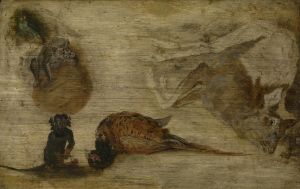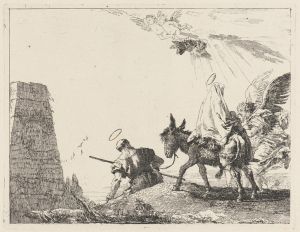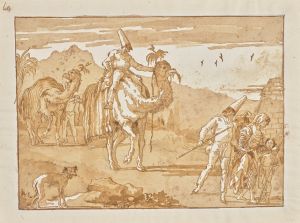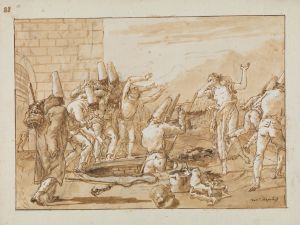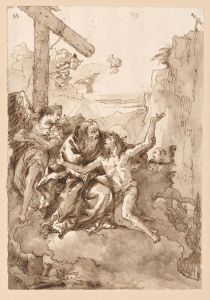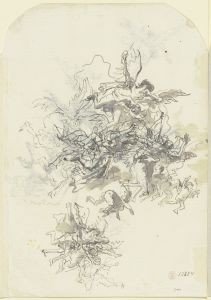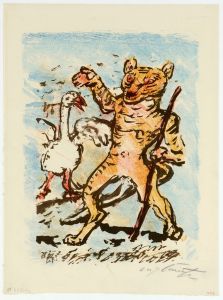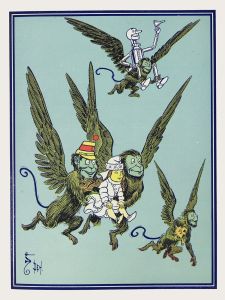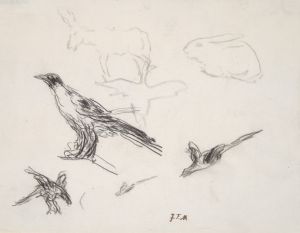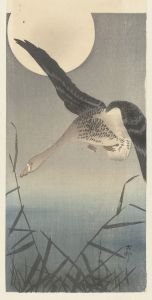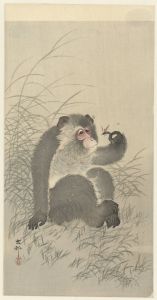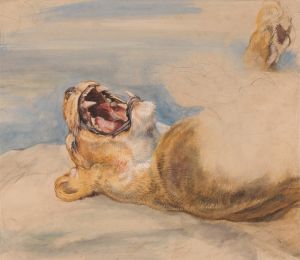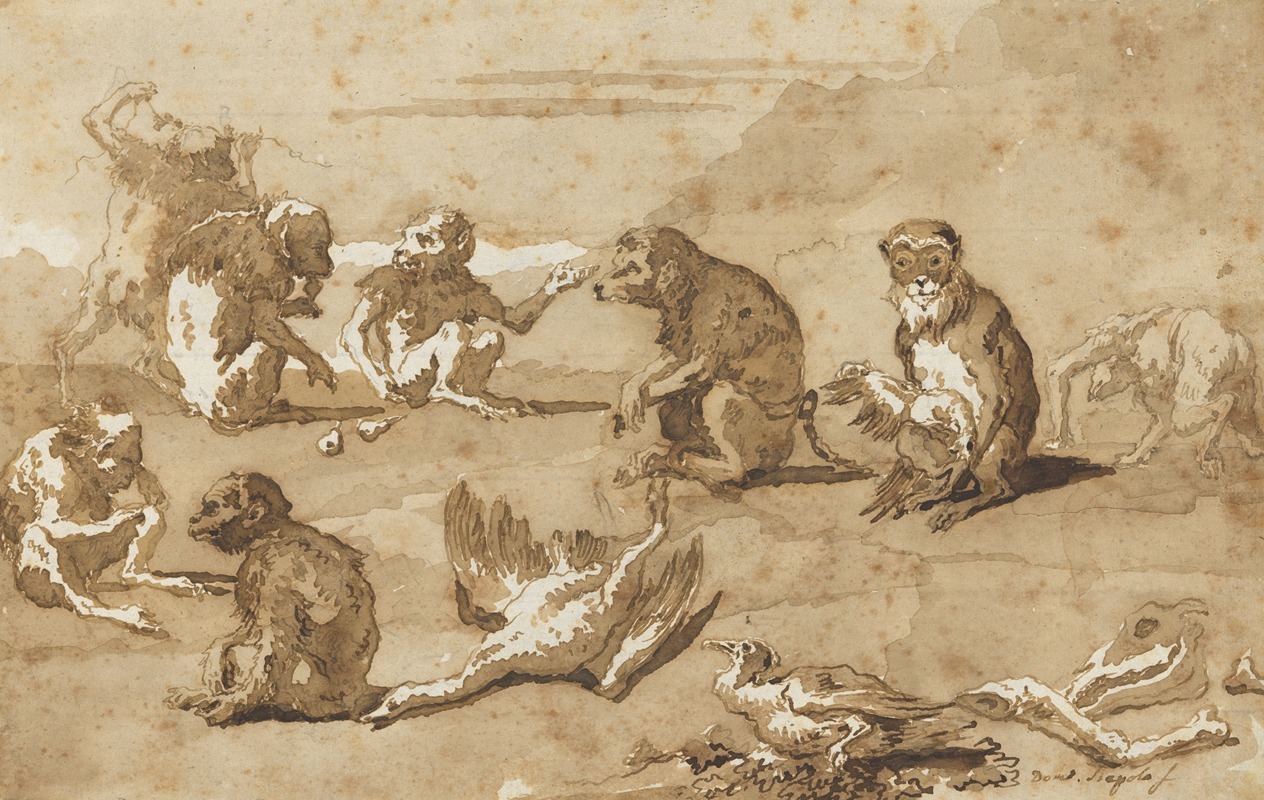
Eight Monkeys, a Dead Goose, and a Cormorant
A hand-painted replica of Giovanni Domenico Tiepolo’s masterpiece Eight Monkeys, a Dead Goose, and a Cormorant, meticulously crafted by professional artists to capture the true essence of the original. Each piece is created with museum-quality canvas and rare mineral pigments, carefully painted by experienced artists with delicate brushstrokes and rich, layered colors to perfectly recreate the texture of the original artwork. Unlike machine-printed reproductions, this hand-painted version brings the painting to life, infused with the artist’s emotions and skill in every stroke. Whether for personal collection or home decoration, it instantly elevates the artistic atmosphere of any space.
Giovanni Domenico Tiepolo, an Italian painter and printmaker, is known for his vibrant and dynamic compositions that often feature a blend of realism and fantasy. One of his intriguing works is "Eight Monkeys, a Dead Goose, and a Cormorant," which exemplifies his skill in capturing the whimsical and sometimes enigmatic aspects of the animal world. This painting is a part of Tiepolo's broader oeuvre that often includes animals, either as the main subject or as part of a larger narrative scene.
Giovanni Domenico Tiepolo was born in Venice in 1727, the son of the renowned painter Giovanni Battista Tiepolo. He was trained in the arts under his father's guidance, which significantly influenced his style and thematic choices. Domenico's works often reflect a keen observation of nature and a playful imagination, characteristics that are evident in "Eight Monkeys, a Dead Goose, and a Cormorant."
The painting itself is a fascinating study of animal behavior and interaction. It features eight monkeys, each depicted with distinct expressions and postures, gathered around a dead goose. The presence of the cormorant adds another layer of intrigue to the composition. Tiepolo's attention to detail is evident in the way he captures the textures of the animals' fur and feathers, as well as the subtle play of light and shadow across the scene.
Tiepolo's choice of animals and their arrangement in this painting may reflect the influence of the Rococo style, which often embraced themes of nature, playfulness, and the exotic. Monkeys, in particular, were popular subjects in Rococo art, symbolizing both the folly and the curiosity of mankind. The inclusion of a dead goose introduces a more somber element, contrasting with the lively presence of the monkeys and the cormorant.
The painting is also notable for its composition and use of space. Tiepolo employs a dynamic arrangement, guiding the viewer's eye across the canvas and inviting them to explore the interactions between the animals. The monkeys are depicted in various poses, some appearing curious, others indifferent, creating a sense of narrative and movement within the still image.
While the exact date of the painting's creation is not specified, it is consistent with Tiepolo's style and thematic interests during the mid to late 18th century. His works from this period often explore similar themes, blending elements of the real and the fantastical in a manner that is both engaging and thought-provoking.
Giovanni Domenico Tiepolo's "Eight Monkeys, a Dead Goose, and a Cormorant" is a testament to his ability to capture the complexity and beauty of the natural world. Through his masterful use of composition, detail, and narrative, Tiepolo invites viewers to ponder the relationships between the animals and the broader themes of life and death. This painting remains an intriguing example of Tiepolo's artistic legacy, showcasing his unique perspective and his contribution to the rich tapestry of 18th-century art.





